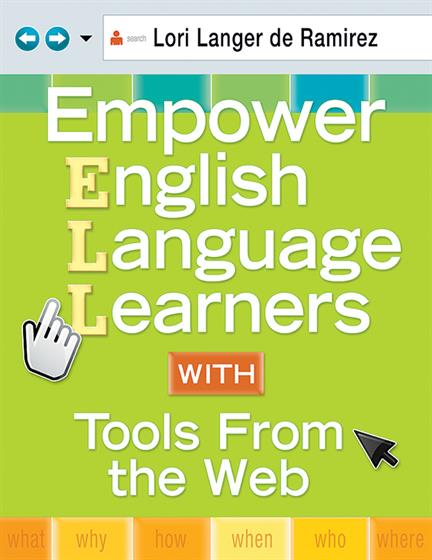Preface
Acknowledgments
About the Author
1. Why Use Web 2.0 Tools With ELLs?
Introduction
ELLs in Schools: Some Challenges to Consider
Why Web 2.0 With ELLs?
Preparing ELLs for the 21st Century
Web 2.0 and the TESOL Standards
Safety Concerns and the Web
References
Suggested Readings
Helpful Web Sites
2. Blogs: Virtual Language Portfolios
What Is a Blog?
Why Read and Write a Blog With ELLs?
How to Use Blogs With ELLs: A Sample Blog Project
When to Use Blogs With ELLs
Who Is Using Blogs With ELLs?
Make Your Own Blog
Where to Find More Information About Blogs
References
Suggested Readings
Helpful Web Sites
3. Wikis: Collaboration in a Virtual Space
What Is a Wiki?
Why Read or Write a Wiki With ELLs?
How to Use Wikis With ELLs: A Sample Wiki Project
When to Use Wikis With ELLs
Who Is Using Wikis With ELLs?
Make Your Own Wiki
Where to Find More Information About Wikis
Suggested Readings
Helpful Websites
4. Podcasts: Get them Talking!
What Is a Podcast?
Why Listen to and Create Podcasts With ELLs?
How to Use Podcasts With ELLs: A Sample Podcast Project
When to Use Podcasts With ELLs
Who is Using Podcasts With ELLs?
Make Your Own Podcast
Where to Find More Information About Podcasts
References
Suggested Readings
Helpful Web Sites
5. Viewing, Creating, and Sharing Video: YouTube and TeacherTube
What Are YouTube and TeacherTube?
Why View, Create, and Share Videos With ELLs?
How to Use YouTube or TeacherTube With ELLs: Sample YouTube Activities
When to Use YouTube and TeacherTube With ELLs
Who is Using YouTube and TeacherTube With ELLs?
Make Your Own Video
Where to Find More Information About YouTube and TeacherTube
Suggested Readings
Helpful Web Sites
6. Sharing Visual Media: VoiceThread and Flickr
What is Visual Media?
Why Create and Share Visual Media With ELLs?
How to Use VoiceThread and Flickr With ELLs: Digital Storytelling With VoiceThread
When to Use VoiceThread and Flickr With ELLs
Who is Using VoiceThread With ELLs?
Make Your Own VoiceThread
Where to Find More Information About VoiceThread and Flickr
References
Suggested Readings
Helpful Web Sites
7. Social Networking: Facebook, MySpace, and Twitter
What Is Social Networking?
Why Participate in Social Networking With ELLs?
How to Use Social Networking Sites With ELLs: A Sample Facebook Lesson
When to Use Social Networking With ELLs
Who is Using Social Networking With ELLs?
Join a Social Networking Site
Where to Find More Information About Social Networking
Suggested Readings
Helpful Web Sites
8. Social Bookmarking: Diigo and Del.icio.us
What is Social Bookmarking?
Why Participate in Social Bookmarking With ELLs?
How to Use Social Bookmarking With ELLs: The Best Social Bookmarking Applications
When to Use Social Bookmarking With ELLs
Who is Using Social Bookmarking With ELLs?
Make Your Own Social Bookmarking Page
Where to Find More Information About Social Bookmarking
Suggested Readings
Helpful Web Sites
9. Virtual Worlds: Panwapa and Teen Second Life
What Is a Virtual World?
Why Participate in Virtual Worlds With ELLs?
How to Use Virtual Worlds With ELLs: Sample Virtual Worlds Lesson
When to Visit Virtual Worlds With ELLs
Who is Visiting Virtual Worlds With ELLs?
Join the Virtual World
Where to Find More Information About Virtual Worlds
Suggested Readings
Helpful Web Sites
Index





